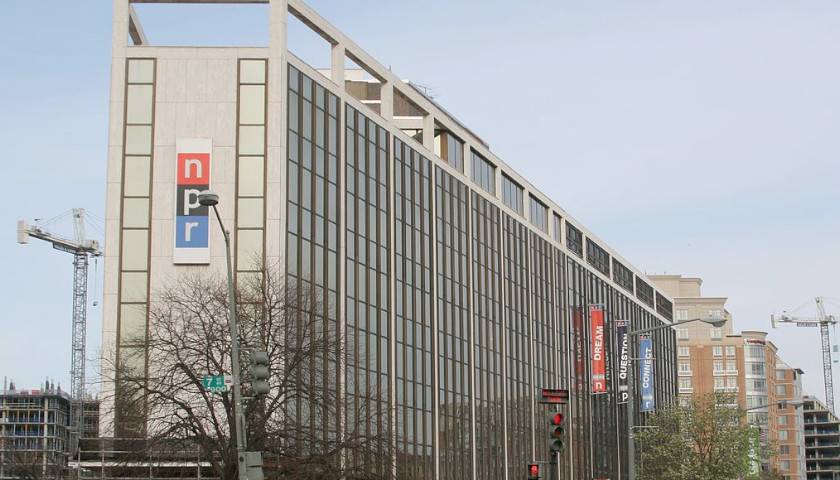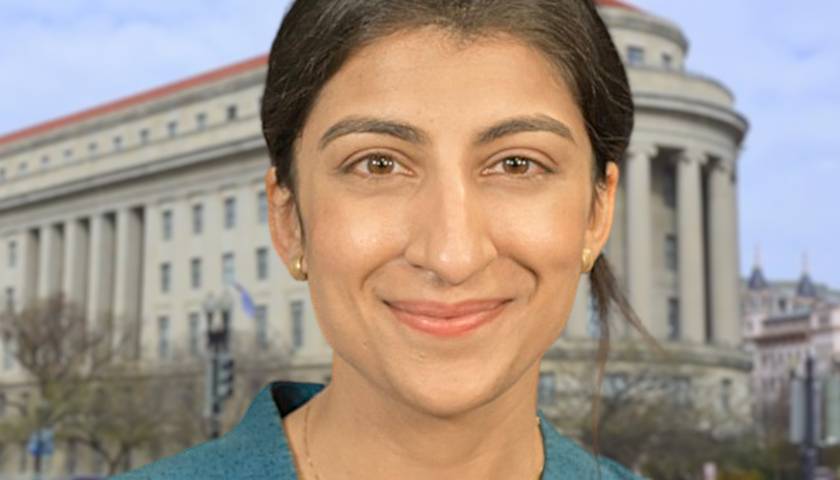by Charles Lipson
“I don’t want any yes-men around me,” said Sam Goldwyn, the Hollywood producer famed for his movies and malapropisms. “I want everybody to tell me the truth even if it costs them their job.” The brass at National Public Radio must have heard Sam, but they add a slight amendment. We want only “yes-men” (they/them) and will boot anyone who dares to dissent.
Lest there be any doubt, NPR just proved it by suspending, without pay, the staffer who exposed the pervasive problems there. He dared to write publicly that that National Public Radio was uniformly ideological, deeply committed to its strident left-wing views, and determined to exclude any alternatives. For saying that out loud, they cut off Uri Berliner’s paycheck for five days. It’s their way of saying, “Thank you for your feedback.” Q.E.D.
Berliner, disgusted by NPR’s response, resigned Wednesday with a fiery statement: “I cannot work in a newsroom where I am disparaged.” Who could?
There are really two problems here, not one, and they go well beyond one journalist’s resignation. The first is political bias, which is a problem at all “elite” networks and newspapers, where “hard news” is heavily slanted. The second is that some of these outlets, notably NPR, PBS (the Public Broadcasting System) and their local affiliates, receive taxpayer funding.
Let’s take political bias first. It was once a cardinal rule of journalism that partisan or ideological viewpoints should be confined to editorials and opinion columns. The goal was to keep editorial views out of hard-news reporting, as much as possible. To do it, the editorial staff constantly fought with the business team, who wanted coverage to favor their advertisers.
Those days are long gone and so is even the ideal of unbiased coverage. We have returned to an earlier era when American newspapers were closely affiliated with political parties and local political machines and covered the news to favor them. Today’s newsrooms have revived that stance. They are as ideologically driven as a gender-studies class at Smith College. If you depart from that ideology, you are out, like Bari Weiss at the New York Times.
Because newsrooms now have so few dissenting voices, reporters and editors live inside the bubble and hardly notice their surroundings. If they do, they are determined to preserve that insularity.
The fragmentation of today’s media landscape encourages these strong, partisan stances. Newspapers, magazines, cable networks, and podcasts know the market is finely sliced. They have strong incentives to choose a narrow slice for themselves and appeal to it by confirming their audience’s bias, not challenging it. That’s as true for right-wing talk radio as it is for left-wing public radio.
Just as elite attitudes have moved further left, so have elite publications and broadcasts. Since the Democratic Party has trod that same path, even as Republicans have become more nationalist and populist, the bias in elite newsrooms has naturally moved further left. That includes outlets like NPR and PBS. Their audience drives EVs, not Ford F-150s.
What makes this bias a policy issue is that NPR, PBS, and their local outlets receive taxpayer money. They shouldn’t. It was justifiable for educational programming. It cannot be justified for news or entertainment.
Public funding for news programming is fundamentally wrong in a democracy when there are so many other ways to receive news and information. The problem is compounded when taxpayer money pays for coverage is partisan and biased. That’s not an issue for MSNBC or the New York Times. They are private businesses. They can do whatever they damn well please. Not so for NPR, PBS, and their local affiliates. They do receive taxpayer money.
When NPR faced criticism this week, it shot back with deceptive statistics, claiming less than 1% of its money is from the government. That’s three-card-monte accounting.
To understand why, we need to look at how Washington disburses taxpayer money for public TV and radio, some $500 million in the next fiscal year. That money doesn’t go directly to NPR. (Hence, the 1% claim.) They get it indirectly. First, the federal outlay goes to the Corporation for Public Broadcasting, a private entity, as mandated in a 1967 law. The CPB sends nearly all that money to local public radio and TV stations as “community grants.” The stations then use part of that money to buy syndicated programs like NPR’s “Morning Edition” and “All Things Considered.”
NPR last financial statement showed that about one-third of its revenue came from local stations’ purchasing NPR programs. A significant chunk of the money to make those purchases came from the Corporation for Public Broadcasting. To hide that source of taxpayer funding for NPR was its three-card-monte trick.
The larger problem here is not the deception or partisan bias, bad as they are. It’s not the scale of public funding, either. The fundamental problem is that taxpayers should not be underwriting any domestic news organizations, for any amount. Reporting should be completely independent of city, state, and federal government so journalists can report political issues without fear or favor.
Government-funded broadcasting to foreign audiences is different. American taxpayers have legitimate reasons to fund the Voice of America and other channels, primarily to get honest news past the dictators’ censors. But the VOA is prohibited, by law, from broadcasting within the United States or creating programs for U.S. audiences. That’s entirely proper. The same logic should apply to news and news-interview programs from NPR and PBS and their local affiliates.
What about “educational TV”? There were good reasons for a publicly funded network devoted to that mission in the 1950s and 1960s. There were only three major networks and, of course, a genuine need for educational content. That non-political service lasted from 1954 until 1970. It was succeeded by the Public Broadcasting Service, which quickly dropped any mention of “educational.” Member stations of the old National Educational Television were folded into PBS. Their schedules now include a mix of entertainment, educational programs, news, and news interviews.
National Public Radio, by contrast, has never included much educational content. For years, it has been simply a left-wing alternative to right-wing talk radio. That would be fine only if all the funding were private. It’s not.
The evidence shows that the best educational TV, such as “Sesame Street,” does help children learn. So there are good reasons to continue underwriting such programs. Ideally, they should be provided free to anyone who wishes to broadcast them, post them on the web, or use them in class.
But there is no reason for federal, state, or city governments to own any broadcast channel, other than to broadcast public meetings and hearings. For everything else, including educational programs, there are countless channels on cable TV and YouTube.
A good example of what the government can properly fund are the wonderful videos about scientific discoveries, presented in accessible language by Fermilab’s Dr. Don Lincoln. The lab is funded by the government, and Dr. Lincoln conveys its work to the public by posting brief lectures on the web. He is doing what “educational TV” did in the 1950s. In the 2020s, programs like Dr. Lincoln’s can be posted online for the public to use, free. We don’t need public TV or radio to do it, and we don’t need their publicly funded podcasts.
If private institutions want to publish their own educational videos, either free or for sale, the world is open to them. Let “the Great Courses” do that by selling them online. Let “Prager University” do it. Let MIT broadcast its science courses. Let a million podcasts bloom. Privately.
If the federal government wishes to fund genuinely educational content, fine. It’s also fine to provide public services like weather information, which taxpayers already fund. But if the federal government, cities, or states wish to fund news and news interview programs, that’s not fine. Let private entities do it. Exclusively.
What should be done with existing public broadcasting frequencies on radio and television? Put them up for auction and put the money into the public treasury. If civic groups or philanthropies buy them, fine. If commercial enterprises buy them, that’s fine, too. The Department of Education can still fund education programs and make the content available to anyone who wishes to use it or broadcast on their channels. $500 million should buy a lot of new content each year.
What the government should not fund, produce, or broadcast are news or news-interview programs. The issue is not just political bias. The issue is that the heavy hand of government should not control any broadcast news within the U.S. Let the president, Cabinet secretaries, senators, and representatives hold press conferences. Let the White House, Pentagon, or State Department hold briefings. That’s more than enough to get their message out.
They don’t need to fund broadcast networks. That would be true even if their journalists and presentations were fair-minded. They aren’t, and that’s one more reason to end this public funding. But it is not the main reason. The main reason is that it is simply wrong for the government, with its deep pockets and coercive power, to control any broadcast network. Not in a free country.
– – –
Charles Lipson is the Peter B. Ritzma Professor of Political Science Emeritus at the University of Chicago, where he founded the Program on International Politics, Economics, and Security. He can be reached at [email protected].
Photo “NPR Building” by Aude. CC BY-SA 2.5.






